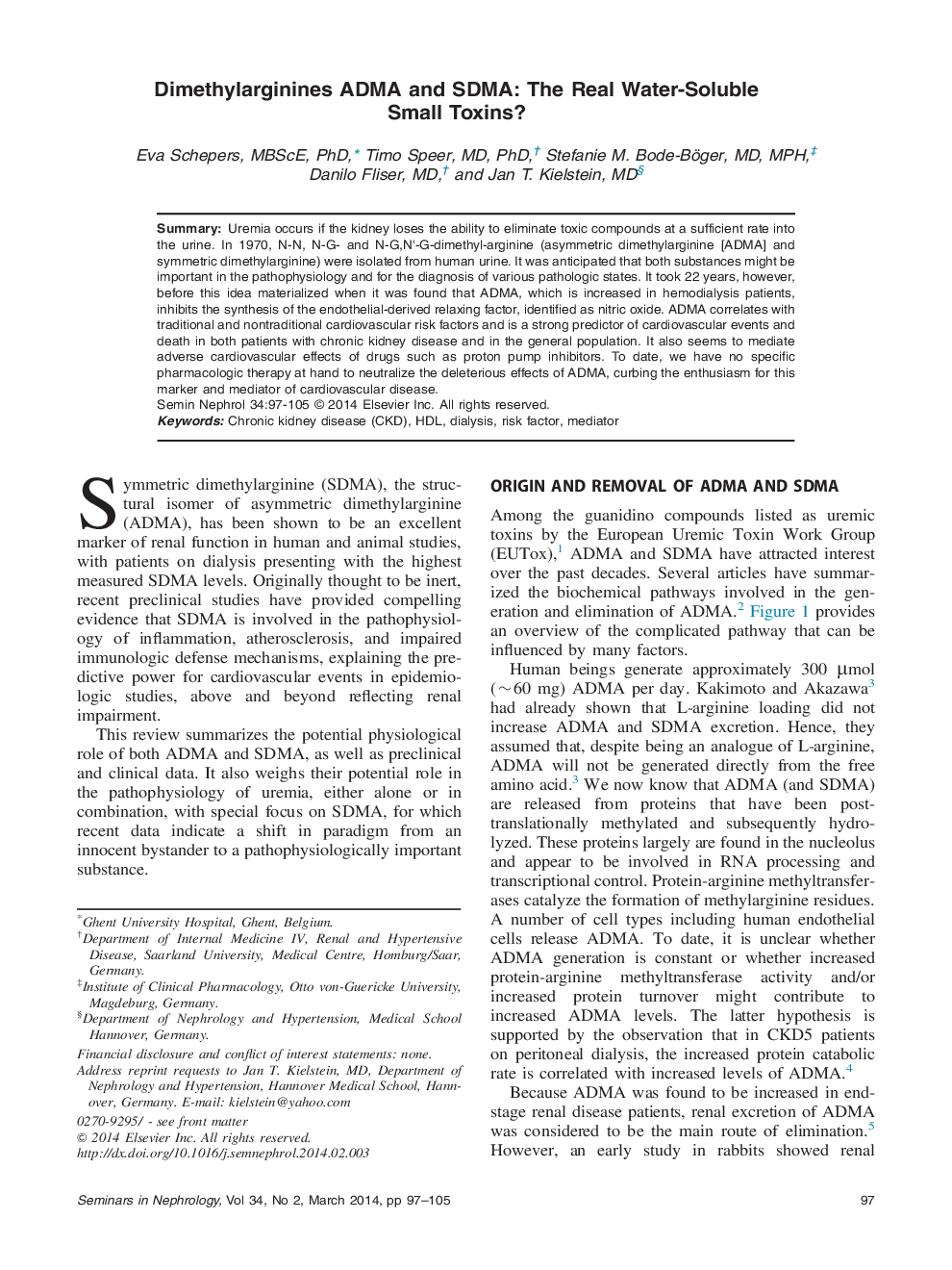| Article ID | Journal | Published Year | Pages | File Type |
|---|---|---|---|---|
| 3896380 | Seminars in Nephrology | 2014 | 9 Pages |
SummaryUremia occurs if the kidney loses the ability to eliminate toxic compounds at a sufficient rate into the urine. In 1970, N-N, N-G- and N-G,N׳-G-dimethyl-arginine (asymmetric dimethylarginine [ADMA] and symmetric dimethylarginine) were isolated from human urine. It was anticipated that both substances might be important in the pathophysiology and for the diagnosis of various pathologic states. It took 22 years, however, before this idea materialized when it was found that ADMA, which is increased in hemodialysis patients, inhibits the synthesis of the endothelial-derived relaxing factor, identified as nitric oxide. ADMA correlates with traditional and nontraditional cardiovascular risk factors and is a strong predictor of cardiovascular events and death in both patients with chronic kidney disease and in the general population. It also seems to mediate adverse cardiovascular effects of drugs such as proton pump inhibitors. To date, we have no specific pharmacologic therapy at hand to neutralize the deleterious effects of ADMA, curbing the enthusiasm for this marker and mediator of cardiovascular disease.
